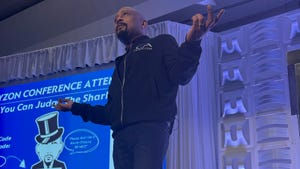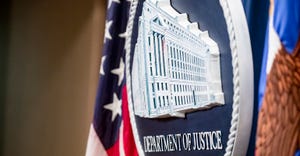DNA = Does Not ApplyDNA = Does Not Apply
A daughter is a daughter for trust purposes — even though she never was adopted and is not genetic descendant
John T. Brooks, partner, and Samantha E. Weissbluth, senior counsel, Foley & Lardner LLP, Chicago
Be forewarned: DNA testing is not always the last word when it comes to a settlor’s descendants. Just look at the recently decided Florida case of Doe v. Doe, 2009 WL 2841190 (Fla. App. 2d Dist. Sept. 4, 2009.)*
In 1988, Chester Jr. and his wife, Eleanor, executed mutual, revocable trusts. The trusts, as later amended, each contained a provision making $50,000 cash gifts to the settlors’ four grandchildren, including Catherine.
Chester Jr. died in 1995. The next year, Eleanor amended her trust such that, instead of giving the $50,000 directly to Catherine, the cash was to be distributed to Catherine’s father, Chester III with a request that he use the money “for the benefit of his child, [Catherine].”
After Chester Jr.’s death, the trustees made the cash gifts to the grandchildren, including Catherine and placed additional assets in a marital trust. Upon Eleanor’s death, the marital trust was to be divided into sub trusts with one share for each “then living grandchild” and one share to the then living descendants of each then deceased grandchild.
Eleanor died in 2005. Upon her death, a portion of her trust was to be used to create subtrusts for her grandchildren. Each of the trusts contain an identical provision stating “in determining whether any person is a child or descendant, only children and descendants by blood shall be included.”
Daddy Dearest
Chester III had married Catherine’s mother in July 1966. Catherine was born 6 ½ months later, and her birth certificate listed Chester III as her father. They divorced in 1971 and executed a marital settlement agreement reciting that Catherine was their child and providing for Chester III’s visitation and payment of child support.
In 1999, when Catherine was 32-years-old, Chester submitted samples from himself and Catherine to two separate labs for DNA testing. The test results conclusively excluded Chester III as Catherine’s father. The record did not disclose what motivated Chester III to investigate whether he was Catherine’s biological father. Catherine asserted that she was tricked into submitting to the testing. There was no evidence presented that anyone ever informed Eleanor about the test results and, in any event, she never amended her trust indicating any intention to exclude Catherine as a beneficiary.
In 2006, the trustees (Chester III and the settlors’ son, Roger) initiated an action against Catherine and the settlors’ three other grandchildren seeking an order determining whether Catherine was a beneficiary of Chester Jr.’s marital trust and Eleanor’s revocable trust. The trustees alleged that Catherine “was not a “descendant by blood” of Chester Jr. and Eleanor. Catherine and the trustees filed cross-motions for summary judgment.
Catherine successfully raised chain of custody issues concerning the 1999 DNA testing, and the court initially denied both motions, but ordered Catherine to submit to court-ordered DNA testing. That testing confirmed the 1999 results that Chester III was not Catherine’s biological father. The parties renewed their cross-motions.
The court granted the trustees’ motion and held that Catherine was not a descendant by blood of Chester Jr. and Eleanor and therefore had no beneficial interest in the trusts. Catherine appealed.
Who Are “Descendants By Blood”?
The appellate court began its opinion by stating that Catherine is indisputably the legitimate child of Chester III because she was born while Chester III was married to her mother and because Chester III acknowledged paternity during the divorce proceedings. The trustees conceded this point, but focused on the lack of a blood tie between Catherine and the settlors.
The appellate court disagreed with the trustees for two reasons: First, because Florida case law supports the conclusion that Catherine is in fact the “blood issue” of Chester III; second, because the trustees misunderstood the trusts’ limitations of gifts to “only children and descendants by blood.”
As to Florida case law, the court focused on a 1978 Florida Supreme Court decision, Knauer v. Barnett in which the court held that a child could not be the legitimate son of his father without also being the blood issue of that father. This decision was based upon a Florida statute (similar to many others) stating that a legitimate child whose parents have intermarried may inherit from his parents’ lineal or collateral kindred.
As to the trusts’ limitation of gifts to “only children and descendants by blood,” the court focused on the fact that such language has been used since long before genetic testing became available to prevent adopted children from inheriting. The court stated that the trustees’ expansive reading of the trusts restriction to “descendants by blood” as requiring genetic testing ignores the lessons of legal history.
The court refused to extend this type of limitation beyond adopted children to disqualify a descendant such as Catherine who was not adopted and who would otherwise qualify as a beneficiary but who happens to lack the requisite genetic profile of the settlors.
In other words, the phrase “descendants by blood” is a legal term of art, not a scientific one, so, as a legitimate child of one of the settlors’ issue, Catherine qualifies as a “descendant by blood.”
Finally, the court noted that there was no evidence that the settlors intended to exclude Catherine as a beneficiary. In the original trusts and subsequent amendments, they consistently referred to Catherine as their “grandchild,” and Eleanor never amended her trust after the 1999 DNA testing.
Heads Up
It’s hard to fault the court’s reasoning, although it comes as a bit of a jolt to those of us used to DNA testing being the last unassailable word (assuming no procedural problems). Trust phrases like the one in question here have provided plenty of grist for the litigation mill regarding the rights of adopted individuals. This case would seem to add yet another dimension and potential battleground regarding the settlor’s intent.
* Note that this opinion has not been released for publication in the permanent law reports and, as such, is subject to revision or withdrawal.
About the Author
You May Also Like







